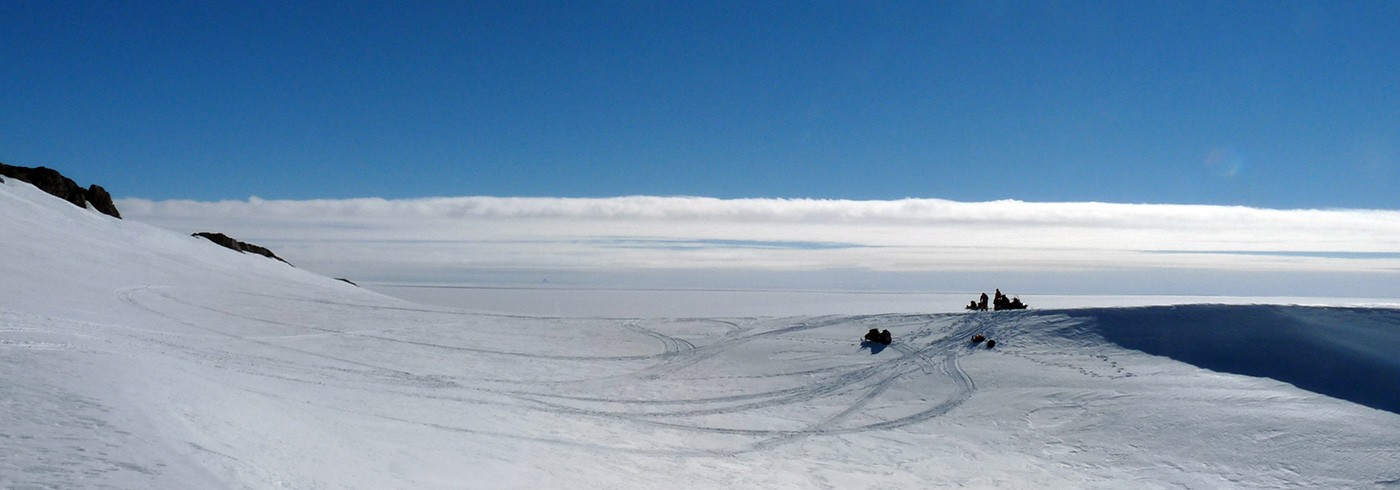The other day we had a long-awaited change in the weather. Now we have had two days of brilliant sunshine and low winds. The temperature is between minus five and minus ten degrees Celsius, much like a nice May day in the Swedish mountains!
On Friday, our second fuel depot was established by helicopter 180 km south of SANAE IV, and yesterday the researchers flew to Svedrupfjella, a nunatak, which is very inaccessible just east of a large ice stream. They left at 10am and returned at 8pm, so it was a long and rewarding day for the team.
Today we also have nice weather, but now the helicopters are busy with other things, and so we are spending time resting before the long journey south to Kirvanweggen. We estimate about 30 miles of snowmobiling to reach the area of nunataks located furthest south in Dronning Maud Land. On the way we pass the Borgmassivet. Our first fuel depot is called Mötesplassen, our second depot is located at Stignabben. We also pass the Ahlmannryggen.
The names of the peaks in this area are Nordic, because we are going through an area mapped by the Norwegian-British-Swedish Antarctic Expedition 1949-1952. Ahlmannryggen has, for example, been named after Hans W:son Ahlmann, Stockholm University’s first professor of geography and initiator of the expedition. The expedition was the first to be conducted in international cooperation and became a model for later expeditions to Antarctica and led, among other things, to the International Geophysical Year 1957/58 and the creation of the Scientific Committee on Antarctic Research (SCAR). The research conducted by, among others, Valter Schytt and Gösta H. Liljequist during the expedition was in many ways pioneering in polar contexts.
It’s going to be extremely interesting to get south through this, from a Swedish point of view, classical area, where Valter Schytt went using dog sleds 68 years ago. Personally, I also look forward to passing Istind. I have been studying the pyramid-like mountain peak since we came to SANAE IV (when weather permits). Like an Egyptian pyramid, it stands out of the ice, snow white on one side. It’s probably one of the most beautiful mountains I’ve seen!

